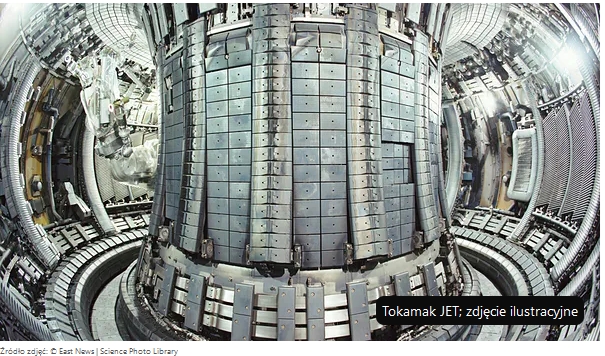RESEARCH PROFILE
- Theoretical studies of the structure of satellites, hypersatellites and satellites of the hypersatellite lines in the K, L and M X-ray spectra of various atoms.
- Theoretical studies of the K-shell hypersatellite linewidths and lifetimes of double K-shell ionized states.
- Analysis of high-temperature plasma (occurring inside tokamak-type reactors) parameters by x-ray diagnostics based on L and M X-ray spectra of high-ionized tungsten atoms.
- Designing the optimal conditions for the first experimental observation of the nuclear excitation by the atomic electron capture for the nuclear isomers.
- Investigations of shake processes resulting from single and double photoionization and nuclear decays.
- Interpretation of the high-resolution L and M X-ray spectra accompanying the multiple ionization of heavy target atoms in collisions with fast ions.
- Studies of influence of changes in the valence electronic configuration on the structure of K, L and M X-ray spectra of d and f electron atoms.

GROUP MEMBERS
Team leader: dr hab. Katarzyna Słabkowska, prof. uniwersytetu
email: Katarzyna.slabkowska@umk.pl
phone: +48 (56) 611 22 39
dr Łukasz Syrocki
email: lukaszsyrocki@umk.pl
phone: +48 (56) 611 43 05
PROJECTS, GRANTS, AWARDS
A very important achievement was a proposition of a few variants of the method allowing the low-temperature plasma diagnostics, using the results of theoretical predictions for K, L and M X-ray lines parameters of characteristic X-rays radiation for heavy metals. The specific variants depend on various ways of plasma producing and on the different characteristics of the devices used to registration the emitted X-ray spectra. The particularly important achievement was the performance, for the first time, of the ionization distribution of tungsten ions by decomposition of the registered Lβ2 lines shape into the theoretical predictions (corresponding to different degrees of ionization). This distribution has been evaluated without using any theoretical models (like hydrodynamic, atomic kinetics simulation codes). Moreover, it has been found that registered with high resolving power the L X-ray line structures of heavy metals can be very sensitive tool to diagnose plasma parameters.
The next achievement was a proposition of a new method for the diagnostics of high-temperature plasma parameters and development, therefore, the advanced procedure using recorded with a high resolving power structures of X-ray spectra of tungsten and molybdenum in order to determine their parameters in tokamak-type fusion reactors (like Joint European Torus, JET).
One of the team’s achievements is the extensive cooperation in the international arena (joint research and articles with scientists from Japan, France, Portugal, USA, Australia). Recently, a project for an experiment on the most powerful Gammasphere spectrometer at Argonne National Laboratory, USA, prepared in cooperation with nuclear physicists from the USA and Australia, was approved: „Expanding the exploration of nuclear excitation by electron capture (NEEC) to new nuclear / atomic systems „. In connection with the implementation of this project, the team was invited to actively participate in the experiment, where we verified theoretical predictions with experimental measurements on an ongoing basis.
The team’s achievement was also designing the optimal conditions for a comprehensive knowledge and understanding of the nature of the nuclear excitation by electron capture (NEEC) process for 93mMo and 242mAm isomers. This research results obtained so far by Team leader and co-workers allowed the first observation of the NEEC process for 93mMo isomer, i.e. identify a new physical phenomenon, by co-workers of the Team leader. Very recently we have proposed to consider the 93mMo isomer depletion as the nuclear excitation by electron capture in resonant transfer process taking into account the momentum distribution of the target electrons. This results shift the upper theoretical limit for the total 93mMo isomer depletion probability toward the experimental value, and show the importance of considering the Compton profile in the theoretical description. Predictions from this new approach would be an essential step towards a deeper understanding of the nature of the NEEC process. This achievements will have an impact on the development of the theory describing the structure, formation and evolution of high spin states of nuclei. This knowledge allow also to better understand the processes occurring in the Universe. The results of these studies will be a starting point for applied research, which aim will be to allow the controlled release of energy stored in the nuclear isomer of selected elements.
Research projects
National grants:
Grant financed by the National Science Center (No. 772-Ch), entitled: ” X-ray hypersatellite natural linewidth as a signature of K-2 states production mechanism and applying the x-ray line structure study for the analysis of collision processes, in particular for high-temperature plasma parameters in tokamak-like reactors diagnostics”, 2011.12.27 – 2017.12.26
Grant funded by the National Science Center – OPUS 13, entitled: ” Designing the optimal conditions for detailed knowledge of the first experimental evidence of nuclear excitation by electron capture to the atomic electron shells”. January 25, 2018 – January 24, 2023.
Team leader: dr hab. Katarzyna Słabkowska, prof. of the University „Priority research teams of the Nicolaus Copernicus University” under the project „Strategy of Excellence – Research University” financed by the Ministry of Science and Higher Education for the years 2020-2022 (co-workers: prof. dr. hab. M. Polasik and dr. Ł. Syrocki).
Grant funded by the National Science Center – MINIATURA5, entitled: “Modeling the structures of high-resolution X-ray spectra coming from high-temperature plasma and produced as a result of photoionization”, 2021-12-15 – 2022-12-14.
International grants:
Modeling of the x-ray spectra for tungsten and molybdenum in high-temperature tokamak plasmas (Work Packages: ER-WP15_IPPLM-04 and WPER – Complementary research), Horyzont 2020 – Euratom, 01.01.2016 – 31.12.2016.
Modeling of the x-ray spectra for tungsten and molybdenum in high-temperature tokamak plasmas (Work Package: Enabling research, Task: ER-WP15_IPPLM-04 and WPER), Horyzont 2020 – Euratom, 01.01.2017 – 31.12.2017.
Awards
National Scholarship of the Foundation for Polish Science, START 2005, laureate Team leader;
Team Award of the Rector of the Nicolaus Copernicus University, III degree, for achievements in scientific and research activities in 2005;
National Scholarship of the Foundation for Polish Science, START 2006, laureate Team leader;
Individual Award of the Rector of the Nicolaus Copernicus University, 3rd degree: „For achievements in the organizational field for obtaining external funds for the implementation of statutory tasks in 2011”, 12/06/2012, laureate Team leader;
Team Award of the Rector of the Nicolaus Copernicus University, 2nd degree: „For achievements in scientific and research activities for proposing an innovative approach providing fundamental information on the relative role of the mechanisms of interaction of the photon with electrons of the K shell of the atom leading to the production of hollow atoms”, 20.12.2012;
Scholarship of the Rector of the Nicolaus Copernicus University for a highly scored scientific publication, 2017;
Team 3rd degree award of the Rector of the Nicolaus Copernicus University for achievements in the field of research and development, 2018;
Scholarship of the Rector of the Nicolaus Copernicus University for a highly scored scientific publication, 2019;
Scholarship of the Rector of the Nicolaus Copernicus University for a highly scored scientific publication, 2021.
SELECTED PUBLICATIONS
M. Polasik, K. Słabkowska, J. Rzadkiewicz, J. Starosta, E. Wiatrowska-Kozioł, J.-C. Dousse, J. Hoszowska, Khα1,2 x-ray hypersatellite line broadening as a signature of K-shell double photoionization followed by outer-shell ionization and excitation, Physical Review Letters 107(7), 073001, 2011;
K. Słabkowska, J. Rzadkiewicz, Ł. Syrocki, E. Szymańska, A. Shumack, M. Polasik, N. R. Pereira and JET contributors, On the interpretation of high-resolution x-ray spectra from JET with an ITER-like wall, Journal of Physics B: Atomic, Molecular and Optical Physics 48, 144028, 2015;
Y. Ito, T. Tochio, H. Ohashi, M. Yamashita, S. Fukushima, M. Polasik, K. Słabkowska, Ł. Syrocki, E. Szymańska, J. Rzadkiewicz, P. Indelicato, J. P. Marques, M. C. Martins, J. P. Santos, and F. Parente, Kα1,2 x-ray linewidths, asymmetry indices, and [KM] shake probabilities in elements Ca to Ge and comparison with theory for Ca, Ti, and Ge, Physical Review A – Atomic, Molecular, and Optical Physics 94, 042506, 2016;
K. Słabkowska, J. Starosta, E. Wȩder, Ł. Syrocki, and M. Polasik , Unraveling the origin of the complex structure of the thorium Lγ x-ray lines in high-resolution spectra induced by heavy projectiles, Physical Review A – Atomic, Molecular, and Optical Physics 96, 012506, 2017;
M. Polasik, K. Słabkowska, J. J. Carroll, C. J. Chiara, Ł. Syrocki, E. Wȩder, and J. Rzadkiewicz, Resonance conditions for 93mMo isomer depletion via nuclear excitation by electron capture in a beam-based scenario, Physical Review C 95, 034312, 2017;
C.J. Chiara, J. J. Carroll, M. P. Carpenter, J. P. Greene, D. J. Hartley, R. V. F. Janssens, G. J. Lane, J. C. Marsh, D. A. Matters, M. Polasik, J. Rzadkiewicz, D. Seweryniak, S. Zhu, S. Bottoni, A. B. Hayes, S. A. Karamian, Isomer depletion as experimental evidence of nuclear excitation by electron capture, Nature 554, 2018;
J. Rzadkiewicz, M. Polasik, K. Słabkowska, Ł. Syrocki, E. Węder, J. J. Carroll, J. C. Chiara , Beam-based scenario for 242mAm isomer depletion via nuclear excitation by electron capture, Physical Review C 99, 044309, 2019
J. Rzadkiewicz, M. Polasik, K. Słabkowska, Ł. Syrocki, J. J. Carroll, C. J. Chiara, Novel Approach to 93mMo Isomer Depletion: Nuclear Excitation by Electron Capture in Resonant Transfer Process, Physical Review Letters 127, 042501, 2021;
Ménesguen, M. C. Lépy, Y. Ito, M. Yamashita, S. Fukushima, T. Tochio, M. Polasik, K. Słabkowska, Ł. Syrocki, P. Indelicato, J.P. Gomilsek, J. P. Marques, J. M. Sampaio, J. Machado, P. Amaro, M. Guerra, J. P. Santos, F. Parente, Structure of single KL0–, double KL1–, and triple KL2 − ionization in Mg, Al, and Si targets induced by photons, and their absorption spectra, Radiation Physics and Chemistry 194, 1-14, 2022.


 ul. Gagarina 7, 87-100 Toruń
ul. Gagarina 7, 87-100 Toruń